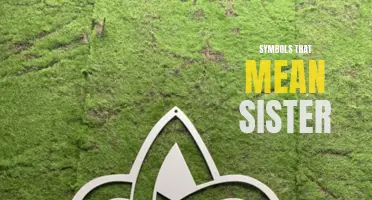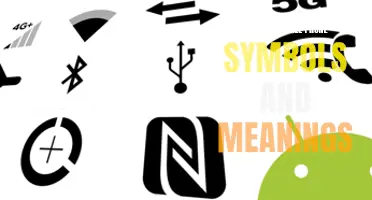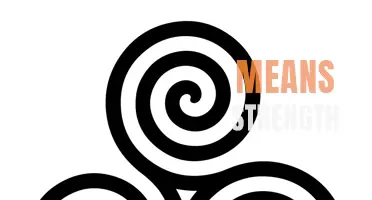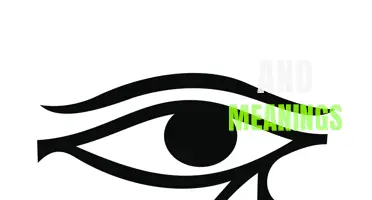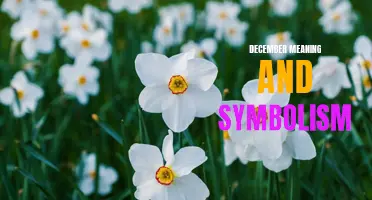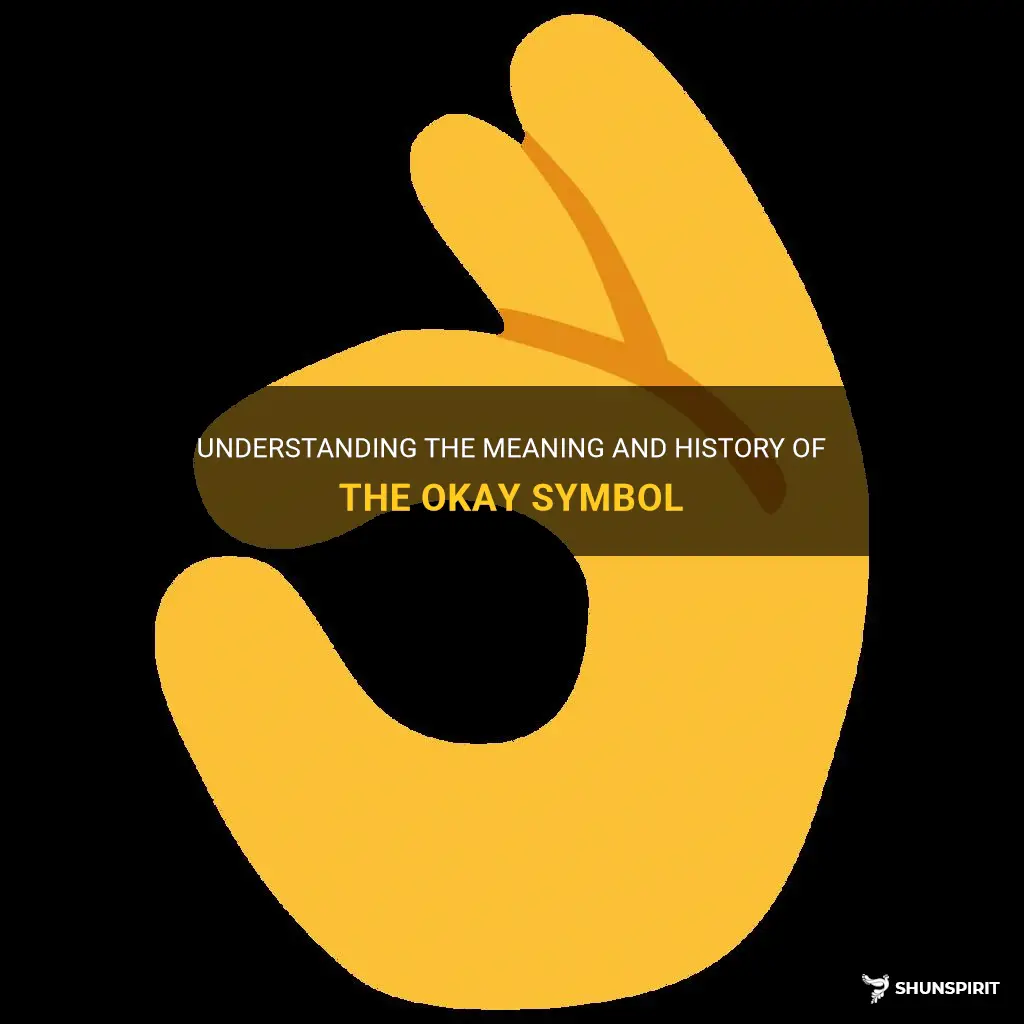
The okay symbol is a widely recognized hand gesture that represents various meanings and interpretations across different cultures and contexts. From a simple gesture indicating approval or agreement to an internet meme turned controversial symbol, the okay symbol has a fascinating history and cultural significance. Whether it's used innocently or with a controversial or subversive undertone, the okay symbol has undeniably become a topic of conversation and debate in recent years.
What You'll Learn
- What is the cultural or historical significance of the okay hand gesture?
- Is the okay symbol universally understood to mean approval or agreement?
- How has the meaning of the okay hand gesture evolved over time?
- Are there any cultural contexts in which the okay symbol holds a different or negative meaning?
- How has the use of the okay symbol been appropriated or misused in recent years, particularly in relation to hate symbols or white supremacy?

What is the cultural or historical significance of the okay hand gesture?
The okay hand gesture is a simple gesture that is made by forming a circle with the thumb and index finger, with the remaining three fingers extended. While it may seem like a mundane gesture, it actually holds a significant cultural and historical meaning in various contexts around the world.
One of the most commonly known meanings of the okay hand gesture is that it symbolizes the word "okay" or "all is well." This meaning originated in the United States in the mid-20th century and has since spread to many other English-speaking countries. It is often used as a hand signal to indicate approval, agreement, or understanding.
However, the okay hand gesture has also been associated with other meanings in different cultural contexts. In some countries, such as Brazil and Turkey, the gesture is considered offensive and vulgar, similar to an offensive gesture in Western culture involving the middle finger. This discrepancy in interpretation highlights the importance of understanding cultural differences and norms when using gestures in different parts of the world.
In recent years, the okay hand gesture has gained further cultural significance due to its association with white supremacy and hate groups. This association began as an Internet hoax in 2017 when a popular imageboard website started a meme claiming that the gesture was a secret symbol for white power. This misinformation spread rapidly, leading to the okay hand gesture being appropriated and used by individuals with racist or extremist beliefs. This development has caused controversy and led to debates about the appropriate use of the gesture in various settings.
Despite these negative connotations, it's worth noting that the majority of people who use the okay hand gesture do so innocently and without any ulterior motives. In most contexts, it remains a harmless gesture that is widely recognized and understood as a positive affirmation or approval.
The historical and cultural significance of the okay hand gesture demonstrates the complexities and fluidity of meaning behind seemingly simple gestures. It serves as a reminder that gestures, like any form of communication, can be subject to interpretation and can carry different meanings depending on the cultural and historical context in which they are used. It is essential to approach gestures with sensitivity and respect, and to be aware of the potential implications they may have in different cultural settings.
The Symbolic Meaning Behind the Doctor Symbol: Decoding Its Significance
You may want to see also

Is the okay symbol universally understood to mean approval or agreement?
The okay symbol, consisting of a hand forming a circle by touching the thumb and index finger together, is often used as a gesture to indicate approval or agreement. However, its meaning may not be universally understood, as cultural contexts and regional variations can affect its interpretation.
In general, the okay symbol is widely recognized in Western cultures as a sign of approval or agreement. It is commonly used in situations where words may not be enough to express consent or satisfaction. For example, during a meeting, participants might use the okay symbol to silently signal agreement with a proposed idea or plan. Similarly, it can be used in social settings to convey approval or show that everything is going well.
However, the meaning of the okay symbol can vary in different parts of the world. For instance, in some South American countries, particularly Brazil and Argentina, the gesture is considered offensive and vulgar. In these regions, the gesture is equivalent to giving someone the middle finger in Western cultures.
Even within Western cultures, the interpretation of the okay symbol can sometimes be different. In certain contexts, such as sports events, the gesture may be associated with mocking or insulting the opposing team or its fans. This means that the okay symbol can carry negative connotations depending on the situation and the social dynamics involved.
Furthermore, the rise of online communication and memes has also impacted the perception and meaning of the okay symbol. In recent years, the okay symbol has been co-opted by certain online communities as a symbol of white supremacy. This association has led to the symbol being labeled as a hate symbol by some organizations, including the Anti-Defamation League.
In conclusion, while the okay symbol is generally understood to mean approval or agreement in Western cultures, its meaning may not be universally recognized. Cultural context, regional variations, and evolving online associations can all affect how the gesture is interpreted. It is important to consider the specific context in which the okay symbol is used to ensure proper understanding and avoid any unintended offense.
Decoding the Language of Computer Port Symbols: What Do They Mean?
You may want to see also

How has the meaning of the okay hand gesture evolved over time?
The okay hand gesture, made by forming a circle with the thumb and index finger and extending the other fingers, has been a commonly used hand signal for centuries. However, in recent years, its meaning and symbolism have evolved, largely due to its appropriation by various groups and controversies surrounding its use.
Historically, the okay hand gesture has been regarded as a symbol of approval or agreement. It is often used to signal that something is satisfactory or acceptable. In this sense, the gesture can be traced back to the early 19th century, where it became popularized in the United States. It quickly spread and became an international symbol of agreement or approval.
However, in recent years, the okay hand gesture has taken on new meanings, particularly in the online and social media spheres. In 2017, a controversial hoax began circulating on the internet claiming that the gesture had been declared a hate symbol by the Anti-Defamation League (ADL). This hoax was largely spread as a form of trolling and to create confusion. Unfortunately, it gained traction and led to the okay hand gesture being associated with white supremacy and hatred.
This association was further amplified when individuals associated with hate groups or engaged in online trolling started using the okay hand gesture as a covert way to signal their allegiance or beliefs. It became a form of dog-whistle politics, where a seemingly innocent gesture was used to communicate a hidden, offensive agenda.
In response to this appropriation and controversy, many organizations, including the ADL, clarified that the okay hand gesture itself is not inherently racist or hateful. The ADL stated that context is important in determining whether the gesture is being used innocently or with malicious intent. They urged caution in labeling individuals based solely on their use of the gesture.
Despite these clarifications, the okay hand gesture continues to be associated with white supremacy and hatred by some. Its meaning has become highly polarized, which has led to its use being discouraged in certain contexts, such as in schools or public spaces.
In addition to its appropriation by hate groups, the okay hand gesture has also been associated with various memes and internet trends. It has been widely used in online videos and images as a playful or sarcastic gesture. This further adds to the complexity of its meaning, as it can now be interpreted in multiple ways depending on the context and the audience.
In conclusion, the meaning of the okay hand gesture has evolved over time. From a simple symbol of approval or agreement, it has been appropriated and associated with white supremacy, leading to widespread controversy and confusion. While some still view it as an innocent gesture, others see it as a symbol of hatred. The polarization of its meaning highlights the importance of context and understanding when interpreting gestures and symbols in our increasingly interconnected world.
The Hidden Meaning Behind TikTok's Triangle Symbol Explained
You may want to see also

Are there any cultural contexts in which the okay symbol holds a different or negative meaning?
The okay symbol, formed by forming a circle with the thumb and index finger while the other three fingers are extended, is widely recognized and used in many cultures as a symbol to indicate that something is okay or satisfactory. However, there are instances where this hand gesture can hold a different or negative meaning depending on the cultural context.
One such context is in parts of South America, particularly in Brazil and Venezuela, where the okay symbol is seen as vulgar and offensive. In these countries, the gesture is known as "corna" and is used to indicate cuckoldry, implying that someone's partner is cheating on them. It is important to be cautious and avoid using the okay symbol in these countries to prevent unintentionally causing offense or misunderstanding.
Another cultural context in which the okay symbol can hold negative connotations is in certain European countries, such as France and Greece. In these countries, the gesture is known as the "fig sign" and is believed to ward off evil spirits or bad luck. However, when the okay symbol is made with the palm facing inward, it is interpreted as an obscene gesture, similar to the middle finger. Therefore, it is advisable to avoid making the okay sign with the palm facing inward in these countries to avoid insulting or offending individuals.
Furthermore, the okay symbol has also been associated with a hateful and extremist meaning in recent years due to its adoption by white supremacist groups. In 2017, the Anti-Defamation League categorized the okay symbol as a symbol of hate, as it had been co-opted by far-right extremists who used it as a covert way to express their beliefs. This association has led to the okay symbol being perceived negatively by many individuals, especially in the United States and other Western countries, who are aware of its misuse.
It is important to note that the negative connotations of the okay symbol are not widely known or understood in all cultural contexts. In many parts of the world, the gesture is still used innocently and without any negative implications. However, it is advisable to be mindful of these cultural contexts and avoid using the okay symbol in situations where it may be interpreted differently or cause offense.
In conclusion, while the okay symbol is generally recognized as a gesture meaning "okay" or satisfactory, it can hold different or negative meanings in certain cultural contexts. The gesture should be used with caution in places like Brazil and Venezuela, where it is seen as vulgar, as well as in countries like France and Greece, where it can be interpreted as an obscene gesture. Additionally, the okay symbol has gained negative associations with white supremacist groups in recent years. Understanding and respecting these cultural contexts will help prevent misunderstandings and unintended offense when using the okay symbol.
Unraveling the TikTok Symbol Meanings: What Do Those Icons Really Stand For?
You may want to see also

How has the use of the okay symbol been appropriated or misused in recent years, particularly in relation to hate symbols or white supremacy?
In recent years, the use of the okay symbol has been widely appropriated and misused, especially in relation to hate symbols or white supremacy. Originally a simple hand gesture that conveyed a message of approval or agreement, the okay symbol has now become something far more controversial and divisive.
The controversy surrounding the okay symbol can be traced back to an internet hoax in 2017, where a group of users on the site 4chan started a campaign to falsely claim that the okay symbol was a secret symbol of white supremacy. They created images and memes featuring prominent figures making the okay sign, with the intention of fooling people into believing that it had a hateful meaning.
Unfortunately, the campaign was successful, and the okay symbol quickly became associated with white supremacists and hate groups. This association was further amplified when some individuals who were known to be affiliated with hate groups started using the sign during public appearances or in photographs.
The misuse of the okay symbol by white supremacists and hate groups has gained significant media attention, leading to widespread public awareness of its controversial meaning. Some individuals and organizations have even called for the okay symbol to be classified as a hate symbol, similar to how the swastika is recognized as a symbol of hate and intolerance.
It is important to note, however, that not everyone who uses the okay symbol is a white supremacist or a hateful individual. In fact, the majority of people who use the gesture are simply expressing their agreement or approval, unaware of its negative connotations. This has led to confusion and even conflict, as some people perceive innocent uses of the okay symbol as acts of hate or support for hate groups.
The controversy surrounding the okay symbol highlights how easily symbols and gestures can be appropriated and distorted for nefarious purposes. It also underscores the power of internet hoaxes and memes in shaping public perception, often with very real-world consequences.
In response to the misuse of the okay symbol, some individuals and organizations have advocated for a reclaiming of the symbol's original meaning. They argue that by continuing to use the okay sign in its traditional sense, people can undermine the efforts of hate groups to hijack and pervert it. This approach seeks to restore the innocent and positive connotations of the okay symbol, thereby reducing its association with hate and intolerance.
In conclusion, the use of the okay symbol has been appropriated and misused in recent years, particularly in relation to hate symbols or white supremacy. This misuse has resulted in widespread confusion and controversy, with some individuals and organizations calling for the okay symbol to be classified as a hate symbol. However, it is essential to recognize that not everyone who uses the okay symbol has hateful intentions. The controversy surrounding the okay symbol serves as a reminder of how easily symbols can be distorted and manipulated, and the power of internet hoaxes in shaping public perception.
Exploring the Symbolic Meaning Behind the Blue Bird
You may want to see also
Frequently asked questions
The okay symbol typically refers to the sign made by forming a circle with the thumb and index finger while extending the other three fingers. It is commonly used to indicate that something is okay or acceptable.
While the okay symbol traditionally has a neutral or positive meaning, it has also been co-opted by some hate groups as a symbol of white power or white supremacy. Therefore, it is important to be aware of the context in which the okay symbol is used to avoid any potential misunderstandings or offensive connotations.
The okay symbol has undergone a significant shift in meaning in recent years. Originally a hand gesture used to convey approval or agreement, it has now become associated with the alt-right and white supremacist movements. This transformation occurred largely as a result of internet trolling and online campaigns to spread misinformation and create controversy. As a result, the okay symbol's meaning has become highly controversial and nuanced, with various interpretations depending on the context and intent of the user.


